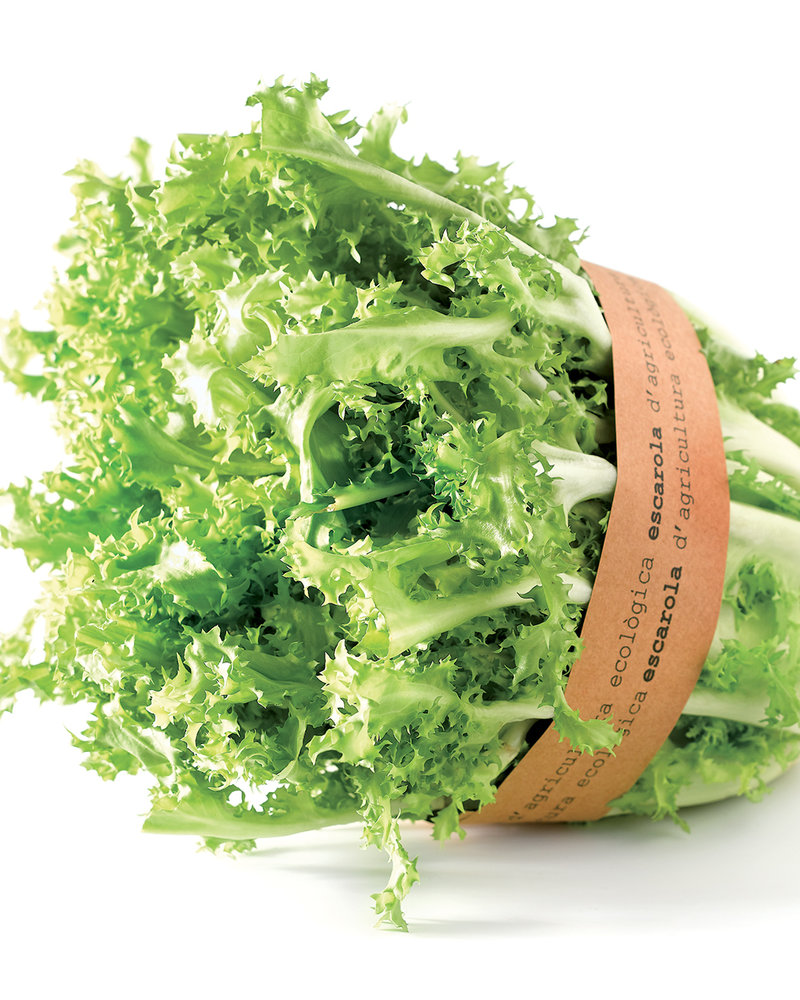BASKET. TEXT. CUINA magazine. PHOTO
Bitter but versatile
A winter salad green from head to toe
This salad green, native to the island of Sicily, is related to wild chicory and also the endive from which it inherits its rather special taste. Along with chicory and other varieties, such as radicci, it fares far better in the cold than common lettuce, making it more of a winter product. Escarole is less bitter than other chicories and the level of bitterness varies throughout the head, with the inner, lighter-coloured leaves being less bitter than the outer, darker green leaves. The consistency of the leaves is more pronounced, the flavour more intense, with that special touch of bitterness that makes it ideal to combine with all manner of toppings, a perfect example being romesco sauce. Unlike its relatives, escarole leaves have roughly serrated edges which are tied during cultivation, both to protect them from the cold and to make the heart whiter and less bitter, usually when harvested the outer, greener leaves are removed and, as they are tougher, can been cooked as a vegetable. Escarole is low in calories and high in vitamin A, fibre, calcium, iron, and vitamin C. Adding escarole to soup will add fibre as well as the other nutrients, in addition to providing some colour when using the dark green leaves. It is commonly used in a number of Italian soups such as straciatella, and even takes pride of place in minestra maritata, or “married soup”, in reference to the happy balance of meat and greens together. In Catalonia, it is one of the essential ingredients of xató a typical salad in the Penedès and Garraf areas, consumed from late autumn to early spring.

